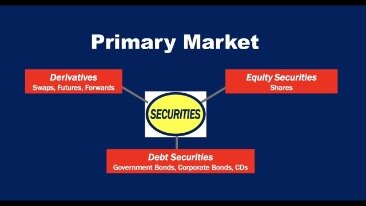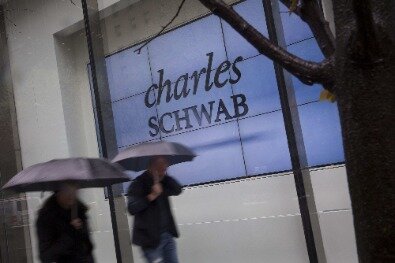Contents:


Get ready to receive three amazing chart pattern videos that are over 30 minutes long straight into your inbox. Bullish flags signal the continuation of a preceding uptrend. Use a trend line and draw the vertical flag pole.
In this article, we hone in on one of the most bullish candlestick formations, aptly termed the bull flag pattern. In the bull flag patterns, for instance, the flag pole is formed first. Technical analysis chat patterns have many such nuances, but it’s really not as complicated as it seems at first glance. Bullish flag formations are found in stocks with strong uptrends and are considered good continuation patterns. They are called bull flags because the pattern resembles a flag on a pole.
In a https://trading-market.org/, you’d place a buy order above the resistance line. In a bear flag, it’s a sell order below support. Bullish and bearish flags are both strong continuation flag patterns. A bear flag is the complete opposite of a bullish one, it means a trend line reversal at the top. Thebull flagpattern is a continuation chart pattern that facilitates an extension of the uptrend. The price action consolidates within the two parallel trend lines in the opposite direction of the uptrend, before breaking out and continuing the uptrend.
How to Trade Flag Patterns
Following the creation of a short-term peak, the price action starts a correction to the downside. Just like with any other chart pattern, the main objective of a bull flag is to allow traders the opportunity to profit from the market’s momentum. In this way, entry and exit points can be determined by studying the trajectory of the pattern’s trend. No pattern will always provide rewards, but they do substantially lower the risk of trading. A bear flag is an upside-down version of a bull flag. Both flag patterns look similar in that they both portray a flag shape and its pole.

If a Bull Flag Pattern is formed, then place a buy stop order above the swing high. Just look through your past trades and notice how often you got stopped out only to watch the market do a complete reversal. CFD Accounts provided by IG International Limited. IG International Limited is licensed to conduct investment business and digital asset business by the Bermuda Monetary Authority. Endurance is one of the most important qualities of a trader. You can open buy trades when the upper limit of the descending channel is broken.
The shape of the flag is not as important as the underlying psychology behind the pattern. Basically, despite a strong vertical rally, the stock refuses to drop appreciably, as bulls snap up any shares they can get. The breakout from a flag often results in a powerful move higher, measuring the length of the prior flag pole.
What are the risks of using bull flag patterns in trading?
It has the same structure as the bull flag but inverted. A breakout strategy aims to capitalize on a sudden, definitive move in price action. In the case of the bullish flag formation, this means that we are looking to buy into the market in anticipation of a robust extension of the existing uptrend. The “bull flag” or “bullish flag pattern” is a powerful indicator for trading uptrends or topside market breakouts.
This report has been prepared without regard to the specific investment objectives, financial situation and needs of any particular recipient. When the price consolidates, the Volume indicator is expected to decrease as bulls aren’t strong anymore. Simultaneously, the upward breakout of the flag’s resistance will signal the strength of bulls, so the trading volumes should increase. To validate the formation of the bull flag in your trading, you can use the Volume indicator. The bull flag is a chart pattern formed within a sharp upside movement. High trading volumes accompany the sharp rise.
- The Stop-Loss order should be placed below the support line of the bull flag.
- A bull flag resembles the letter F, just like the double top pattern looks like an “M” letter and a double bottom pattern – a Wletter.
- Bull flags can also occur on higher time frames like daily charts.
- Your number will not be visible to other members.
The more confident you are of the bullish bias, the more likely you would trade a bull flag breakout. Even in the examples above you can see there are variations. The key things to understand are the initial upward movement, the consolidation period, and the breakout. By looking for them you’ll start to notice how it works. A bull pennant forms as the trading range narrows during the consolidation period. The classic pennant shape appears to slope down from the top and up from the bottom.
Bearish Flag
Let’s evaluate how much the bull flag formation rally of the price lasted before the downward consolidation. This means that we set bull flag profit target 70 points from the point of a bullish pennant of the upper border of the consolidation. After the flag pole has formed, a downward sloping consolidation follows. The duration of accumulation depends on the timeframe the newbie or experienced trader uses. Therefore, the bullish flag can take from several hours to several weeks to form completely.
S&P 500 Shows Bullish Price Volume Action Despite One … – Barchart
S&P 500 Shows Bullish Price Volume Action Despite One ….
Posted: Wed, 29 Mar 2023 07:00:00 GMT [source]
The flag points to the continuation of the bullish prevailing trend and is often seen on the stock and currency trending markets. A breakout is when the price moves above a resistance level or moves below a support level. The price movement of a breakout can be described as a sudden, directional move in price that is…
Conclusion. Use or Avoid the Bull Flag Pattern
Once the pole is found, identify the range of consolidation or wavering in the price of the stock . Prices will likely fluctuate during this stage before they begin trending upwards, assuming the bull flag does what is expected. This is because the consolidation creates a resistance line at the higher end, while the lower end is the support line. When the stock price rises above the resistance level and continues in an upward trend, the pattern has been established. Here is the graph we have a BULLISH FLAG after a good continuous path.
Commentary and opinions expressed are those of the author/speaker and not necessarily those of SpeedTrader. SpeedTrader does not guarantee the accuracy of, or endorse, the statements of any third party, including guest speakers or authors of commentary or news articles. All information regarding the likelihood of potential future investment outcomes are hypothetical.

You need to determine what type of trends you want to capture and have a specific rule on defining them. However, most guides out there teach you how to spot them and not how to trade them. Rayner Teo is an independent trader, ex-prop trader, and founder of TradingwithRayner. If you want to discover whether the market is a trending or a mean-reverting market, you can check out the first section of this article.
Bull Flag: Definition, Pattern, Examples, and Strategies
The above content provided and paid for by Public and is for general informational purposes only. It is not intended to constitute investment advice or any other kind of professional advice and should not be relied upon as such. Before taking action based on any such information, we encourage you to consult with the appropriate professionals. We do not endorse any third parties referenced within the article. Market and economic views are subject to change without notice and may be untimely when presented here. Do not infer or assume that any securities, sectors or markets described in this article were or will be profitable.

Risk capital is money that can be lost without jeopardizing ones financial security or life style. Only risk capital should be used for trading and only those with sufficient risk capital should consider trading. Past performance is not necessarily indicative of future results. Price channels offer another way to evaluate bull flags as many flags fit into counter-trend channels.
Definition: What Is a Bull Flag?
You can use a tool like the 50-period moving average to trail your stop loss and only exit the trade if the market closes beyond it. One of them is to have a pre-determined profit target based on length of flag pole. Well, it’s a term I coined when the market breaks out of a range and then does a pullback for the first time. Pay attention to how the inside candles formed during the flag.
S0 here are some nuances and terminology you might find helpful when you encounter them. This pullback did not form any swing low on its way up. However, it was a test of the broken counter-trendline as a resistance. You could trade it, but you need to figure out the exact entry point separately. The second bear flag contained a bullish outside bar too.
- Descending flag patterns are the most common variant of the bull flag.
- For clarity and ease of understanding, this trading guide focuses on bull flags.
- Range market is one of the most challenging market conditions to trade.
- As a result, traders may consider this slide the start of the downtrend.
To offset some of the risk, lighter shares can be used when trailing the second trendline stop-loss. There are two spots of entry on any flag formation when playing for the trend continuation break. The first entry is on the flag break and the second potential entry is on the break of the high of the flagpole. The first entry is an early entry that allows the trader to capitalize on an initial move back to the high of the flagpole before the stock rejects or breaks out. To buy a pullback using bull flags, it’s a good idea to incorporate another technical analysis tool.
Bitcoin Primed to Rally to $56K as Nasdaq Breaks Out of Bull Flag, Chart Analyst Says – CoinDesk
Bitcoin Primed to Rally to $56K as Nasdaq Breaks Out of Bull Flag, Chart Analyst Says.
Posted: Thu, 16 Feb 2023 08:00:00 GMT [source]
Here’s where you can expect a potential Bear Flag to form as the market does a pullback. After the strong move higher, the market needs to take a “break”. Here’s where you can expect a potential Bull Flag to form as the market does a pullback. Recently, we discussed the general history of candlesticks and their patterns in a prior post. We also have a great tutorial on the most reliable bullish patterns. Also, with this strategy, you don’t have to track the price dynamics.
Will it happen the way you expect every time? Bull flags and bear flags are mirror images of each other on a chart. Bear flags form during a period of consolidation after a precipitous drop. Bear flags come in the same shapes as bull flags — rectangles, pennants, and flat bottom.
Customers who want to use their accounts for day trading must obtain the broker-dealer’s prior approval. Customers must also be aware of, and prepared to comply with, the margin rules applicable to day trading. There are special risks involved with trading on margin. All investing involves risk, including loss of principal invested.
